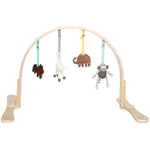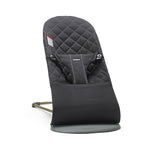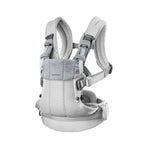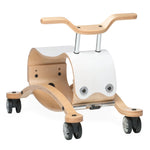The term Volatile Organic Compounds (VOCs) technically refers to compounds that react with nitrous oxides in the atmosphere to form smog. In addition to having negative effects on the environment, there are also associated negative health effects because of off-gassing toxins. Children are particularly susceptible to these negative health effects. This blog will detail home furnishings that typically have VOCs, the negative health effects of VOCs and what to look for to avoid VOCs in your home furnishings.
VOCs in Furnishings
Examples of VOCs commonly found in the home furnishings industry include formaldehyde, benzene and toluene. These compounds are used in caulks, grouts, countertops and paints. They are also frequently found in glues (also known as adhesives) and finishes for cabinetry, flooring and furniture. Furthermore, after the toxic emissions have been released, they are easily absorbed by soft materials, such as carpets and fabrics, and then re-released at a later time.
Health Effects
Formaldehyde is ranked as one of the top ten most hazardous compounds to humans and ecosystems and is a known human carcinogen. Benzene is another known carcinogen as is toluene.
The vapor that VOCs release depresses the nervous system, damages livers, lungs and kidneys and can result in headaches, irritability, decreased concentration and fine motor skill deficits. Children are especially vulnerable because their minds and bodies are still developing (Foster, Stelmak & Hindman, 2007). People who have chronic respiratory problems, compromised immune systems or cardiovascular disease are also particularly susceptible to the negative effects of VOCs.
Unfortunately, we don’t know how long high VOC products such as adhesives, finishes and paints off-gas. Our best guess is years (Jones, 2008). One study found that only 50% of the VOCs in one finish had been released after one year. So, unfortunately, we can’t assume that if we can’t smell it, it can’t hurt us.
What to Look For
To avoid VOC’s in paints, look for Benjamin Moore’s Natura paint which has zero VOCs or the very high quality ECOS Paints which also have zero VOCs, are made in the US and can be delivered to your door. Their Lullaby line includes zero VOC chalkboard and furniture paint too. When installing wallpaper, look for traditional wallpaper paste rather than synthetic or self-stick adhesives which can have a high VOC content.
To avoid VOCs in cabinetry, flooring and furniture look for water-based finishes (not acetone), natural finishes such as waxes and natural oils, or certified low or no VOC finishes and adhesives. There are two well respected certifications for low VOC emissions: GREENGUARD and SCS/IAQ.
GREENGUARD
GREENGUARD Environmental Institute is an independent nonprofit organization that aims to protect human health and improve the quality of life by enhancing indoor air quality and reducing people’s exposure to chemicals and other pollutants. As an accredited, third-party certifying body, the GREENGUARD Environmental Institute certifies products and materials through a nine-step process for low chemical emissions, including VOCs. Products are tested annually to ensure continued compliance. GREENGUARD serves as a public resource for choosing healthier products and materials for indoor environments.
SCS/IAQ
Scientific Certification Systems (SCS) Global Services is an independent, third-party organization which certifies that interior products have low VOC emissions with a transparent indoor air quality (IAQ) standard for furniture and building materials. It is recognized by the US Environmental Protection Agency (EPA) and is typically used for commercial furniture.
In sum, these certifications make it easy to select low VOC products and reduce the risk of negative health effects that children are particularly susceptible to. Modern Nursery features many GREENGUARD certified products in a wide variety of styles.

Barb Dornbush is an award-winning residential interior designer and the co-founder of www.ecorooms.io, a website that makes it easy for furniture shoppers to find stylish and sustainable e-commerce sites. She lives in the mountains of Western North Carolina and loves to hike.
References
Foster, K., Stelmack, A. & Hindman, D. (2007). Sustainable Residential Interiors. NJ: John Wiley & Sons, Inc.
Jones, L. (2008). Environmentally Responsible Design. NJ: John Wiley & Sons, Inc.

















